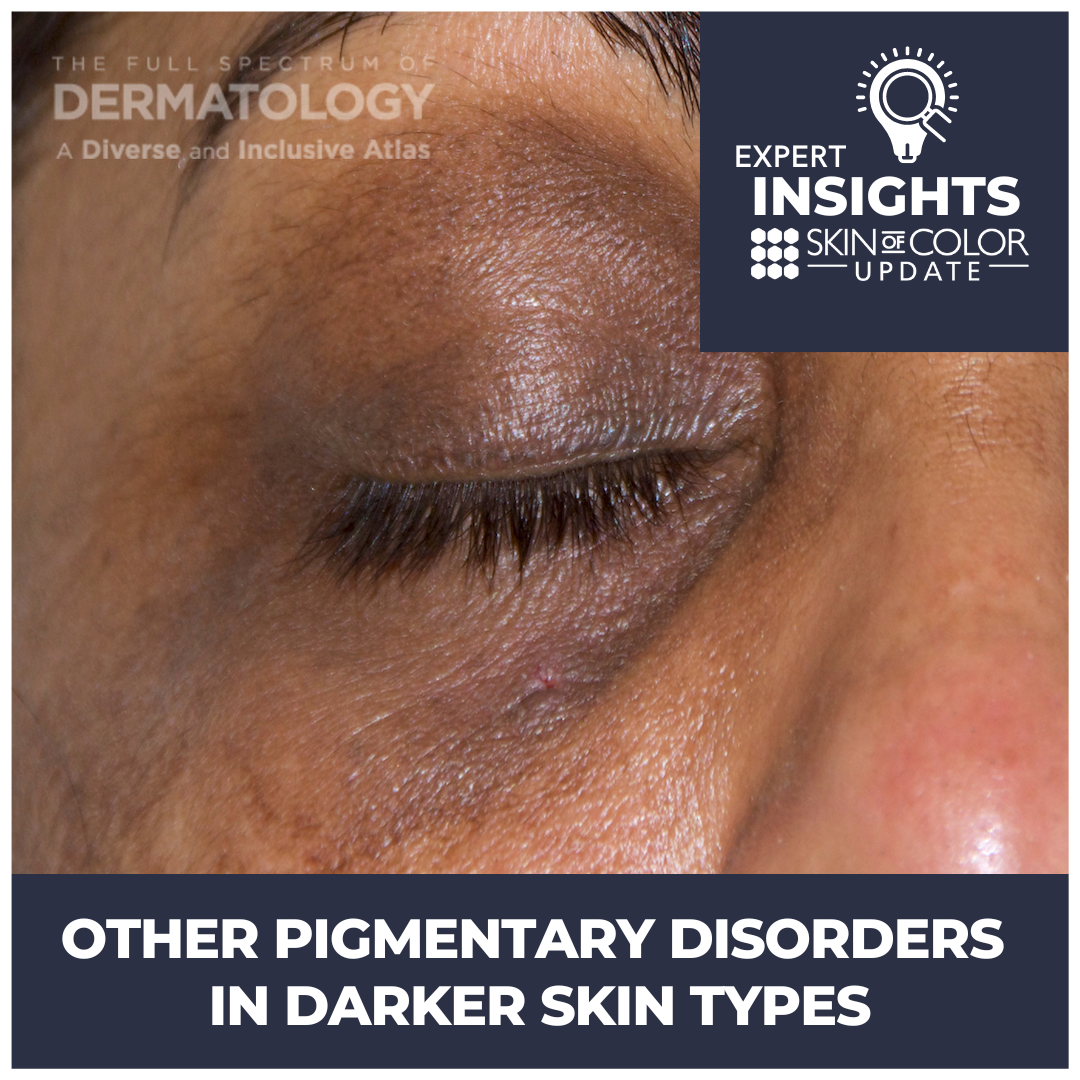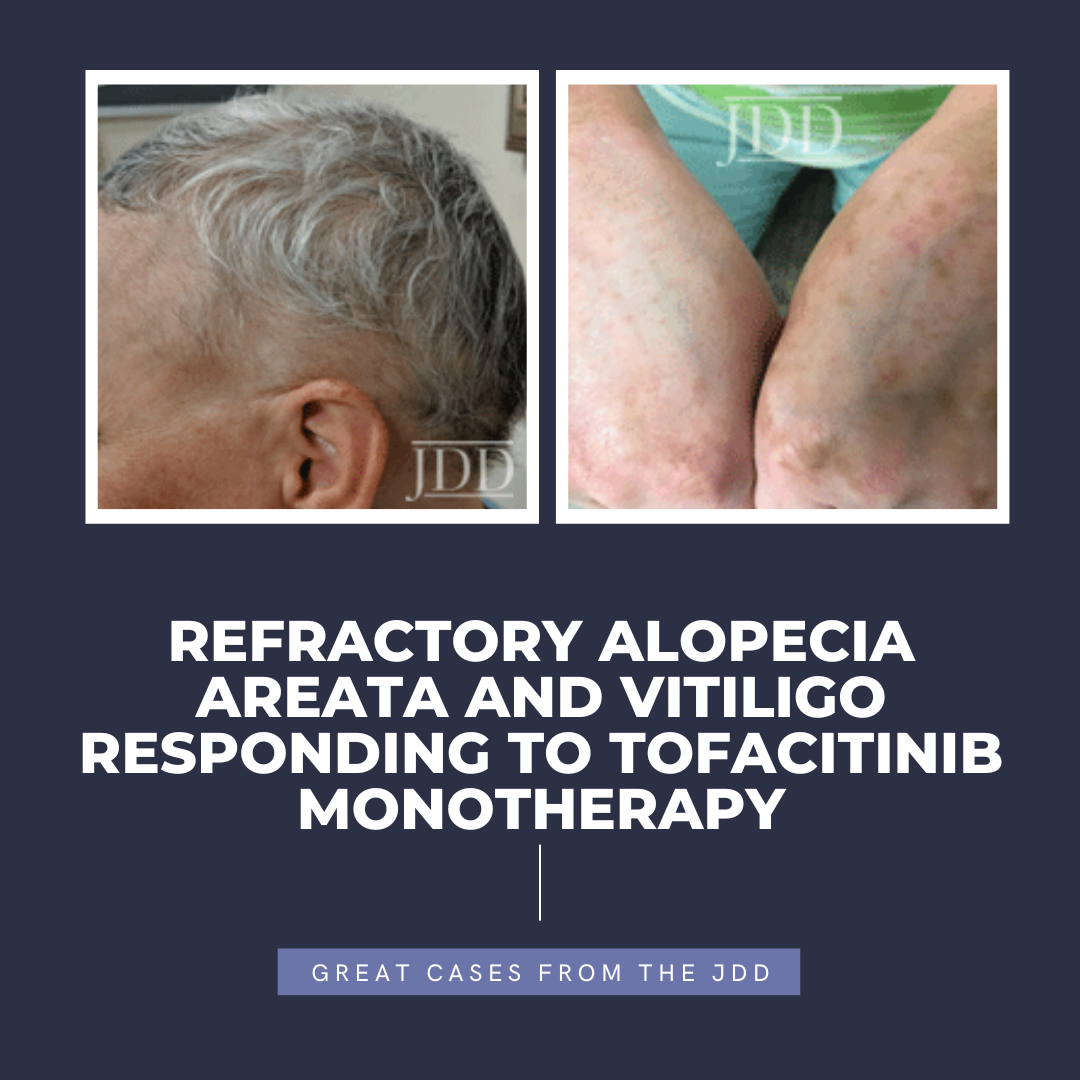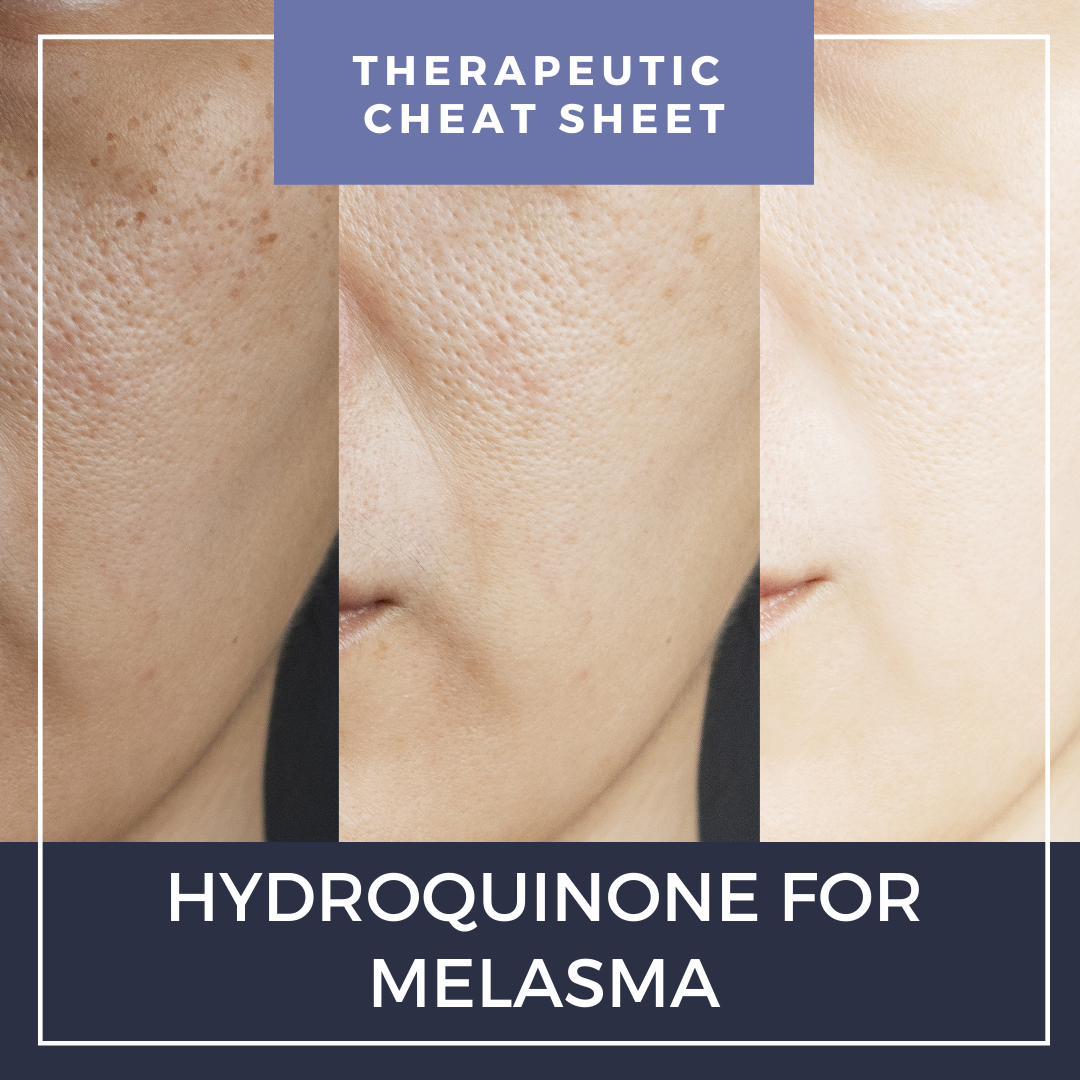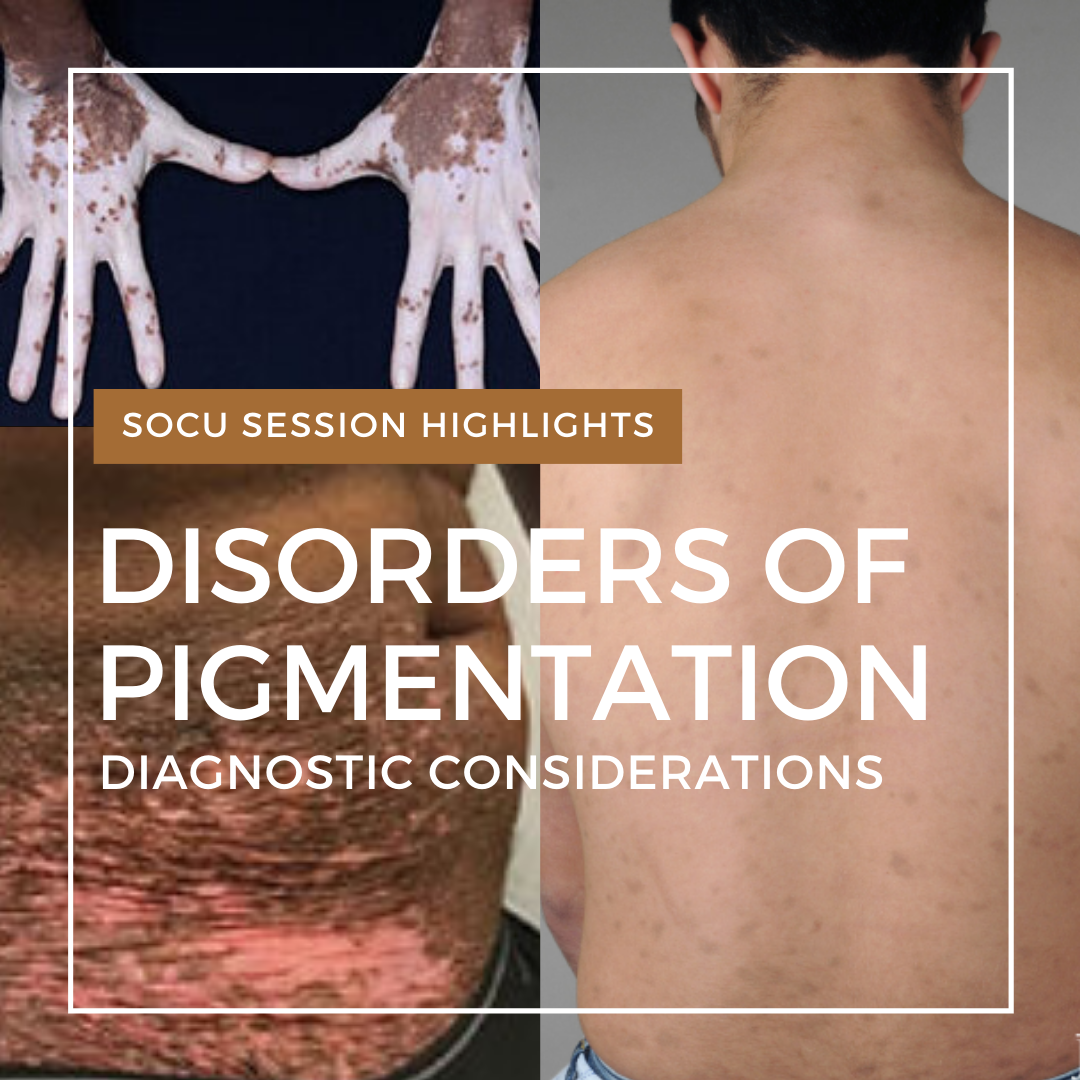Other Pigmentary Disorders in Darker Skin Types
 Patients with darker skin types are susceptible to developing other pigmentary disorders besides melasma. At SOCU 2022, Dr. Heather Woolery-Lloyd, Director of the Skin of Color Division at the University of Miami Miller School of Medicine, gave a fascinating overview of various pigmentary disorders that can affect patients with skin of color and provided clinical pearls immediately useful in our p …
Patients with darker skin types are susceptible to developing other pigmentary disorders besides melasma. At SOCU 2022, Dr. Heather Woolery-Lloyd, Director of the Skin of Color Division at the University of Miami Miller School of Medicine, gave a fascinating overview of various pigmentary disorders that can affect patients with skin of color and provided clinical pearls immediately useful in our p …
 Patients with darker skin types are susceptible to developing other pigmentary disorders besides melasma. At SOCU 2022, Dr. Heather Woolery-Lloyd, Director of the Skin of Color Division at the University of Miami Miller School of Medicine, gave a fascinating overview of various pigmentary disorders that can affect patients with skin of color and provided clinical pearls immediately useful in our p …
Patients with darker skin types are susceptible to developing other pigmentary disorders besides melasma. At SOCU 2022, Dr. Heather Woolery-Lloyd, Director of the Skin of Color Division at the University of Miami Miller School of Medicine, gave a fascinating overview of various pigmentary disorders that can affect patients with skin of color and provided clinical pearls immediately useful in our p … Continue reading "Other Pigmentary Disorders in Darker Skin Types"


 INTRODUCTION
Tofacitinib is a Janus kinase (JAK) 1-3 inhibitor first U.S. Food and Drug Administration (FDA) approved in 2012 for rheumatoid arthritis, with subsequent approval for psoriatic arthritis, ulcerative colitis, polyarticular course juvenile idiopathic arthritis, and ankylosing spondylitis in 2017, 2018, 2020, and 2021, respectively.1,2 In the last several years, oral tofacitinib …
INTRODUCTION
Tofacitinib is a Janus kinase (JAK) 1-3 inhibitor first U.S. Food and Drug Administration (FDA) approved in 2012 for rheumatoid arthritis, with subsequent approval for psoriatic arthritis, ulcerative colitis, polyarticular course juvenile idiopathic arthritis, and ankylosing spondylitis in 2017, 2018, 2020, and 2021, respectively.1,2 In the last several years, oral tofacitinib …  Hydroquinone is the most commonly used depigmentation agent and is a first-line treatment for melasma.1Hydroquinone was available previously in over-the-counter products and is currently available in prescription formulations with common concentration ranges of 0.4 to 5%. Prescription strengths available in the United States include hydroquinone 2% and 4% cream and hydroquinone 2% gel.2,3 In Septe …
Hydroquinone is the most commonly used depigmentation agent and is a first-line treatment for melasma.1Hydroquinone was available previously in over-the-counter products and is currently available in prescription formulations with common concentration ranges of 0.4 to 5%. Prescription strengths available in the United States include hydroquinone 2% and 4% cream and hydroquinone 2% gel.2,3 In Septe …  Pigmentation is key to photoprotection of the skin, eye color, and enhanced barrier function. With increased pigmentation, photoaging is minimized with a concurrent decrease in frequency of skin cancer. In skin of color, these pigmentary advantages come at a cost. These include an increased risk of hyperpigmentation and/or hypopigmentation, hypertrophic scars, keloids, scarring alopecia, and vitam …
Pigmentation is key to photoprotection of the skin, eye color, and enhanced barrier function. With increased pigmentation, photoaging is minimized with a concurrent decrease in frequency of skin cancer. In skin of color, these pigmentary advantages come at a cost. These include an increased risk of hyperpigmentation and/or hypopigmentation, hypertrophic scars, keloids, scarring alopecia, and vitam …  Dr. Lester is the Director of the Skin of Color Program at the Department of Dermatology University of California San Francisco. Wow! This means we got a “two for one special” from her lecture, not only learning about the truths and myths associated with the use of isotretinoin in acne but also recognizing that those who are underrepresented minorities or socioeconomically disadvantaged may no …
Dr. Lester is the Director of the Skin of Color Program at the Department of Dermatology University of California San Francisco. Wow! This means we got a “two for one special” from her lecture, not only learning about the truths and myths associated with the use of isotretinoin in acne but also recognizing that those who are underrepresented minorities or socioeconomically disadvantaged may no …